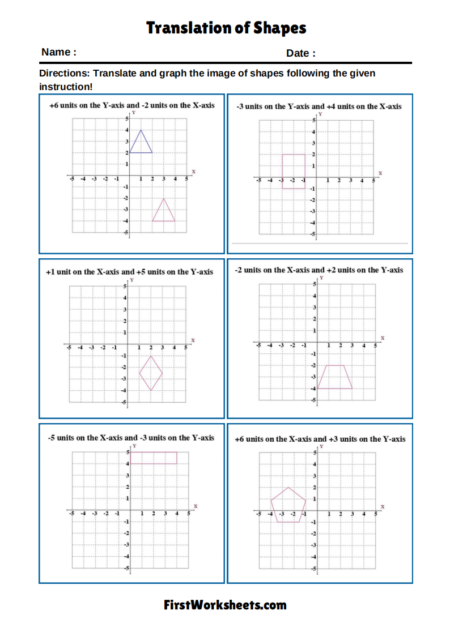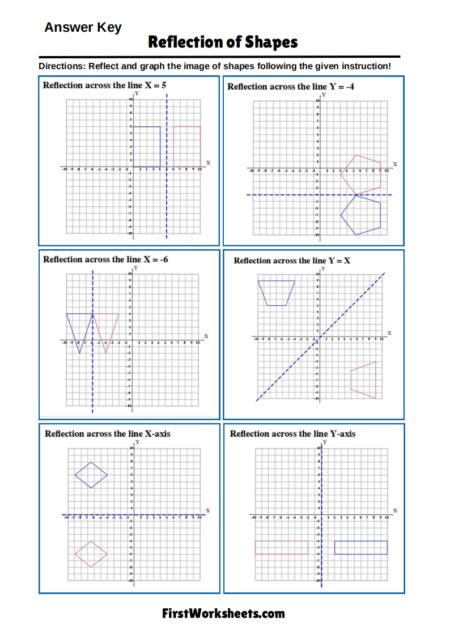This worksheet is about sequences of transformations on a coordinate plane. It’s designed to help students understand how different transformations (like rotations, reflections, and translations) can be combined and applied in a specific order.
Purpose:
- Understanding Transformations: Students learn to recognize and describe the effects of individual transformations (rotations, reflections, translations) on geometric shapes.
- Combining Transformations: Students practice applying multiple transformations in a sequence to achieve a final result. This helps them understand that the order of transformations matters.
- Geometric Reasoning: Students develop their spatial reasoning skills by visualizing how shapes move and change on the coordinate plane.
- Mathematical Communication: Students practice describing transformations using precise mathematical language, which is important for clear communication in geometry.
How it Works:
- Figures and Graphs: The worksheet provides figures on coordinate grids. Each figure is labeled with an original point (e.g., P) and its transformed image (e.g., P’).
- Describing Sequences: Students are asked to describe the specific transformations that were applied to the original figure to reach its final position. For example, a figure might be “reflected over the x-axis and then rotated 90 degrees counterclockwise.”
- Answer Key: The worksheet includes an answer key where students can check their understanding of the transformations.
Example:
Imagine a triangle ABC. If it’s first reflected over the y-axis and then rotated 180 degrees, the image would be labeled A’B’C’. The student would describe this sequence as “reflection over the y-axis, followed by a rotation of 180 degrees.”

Answer Key



